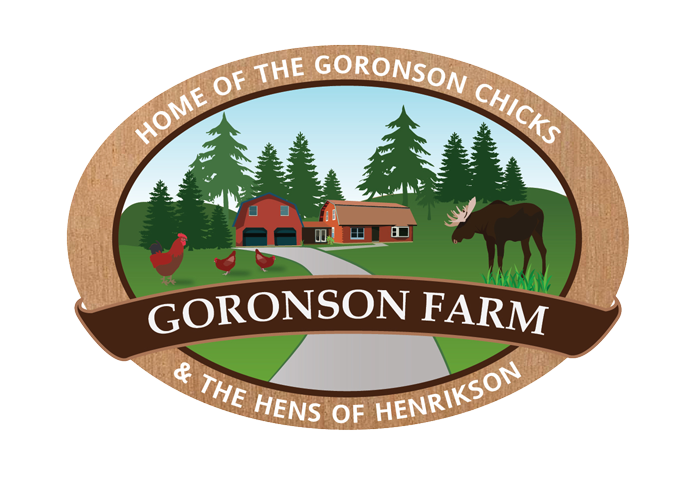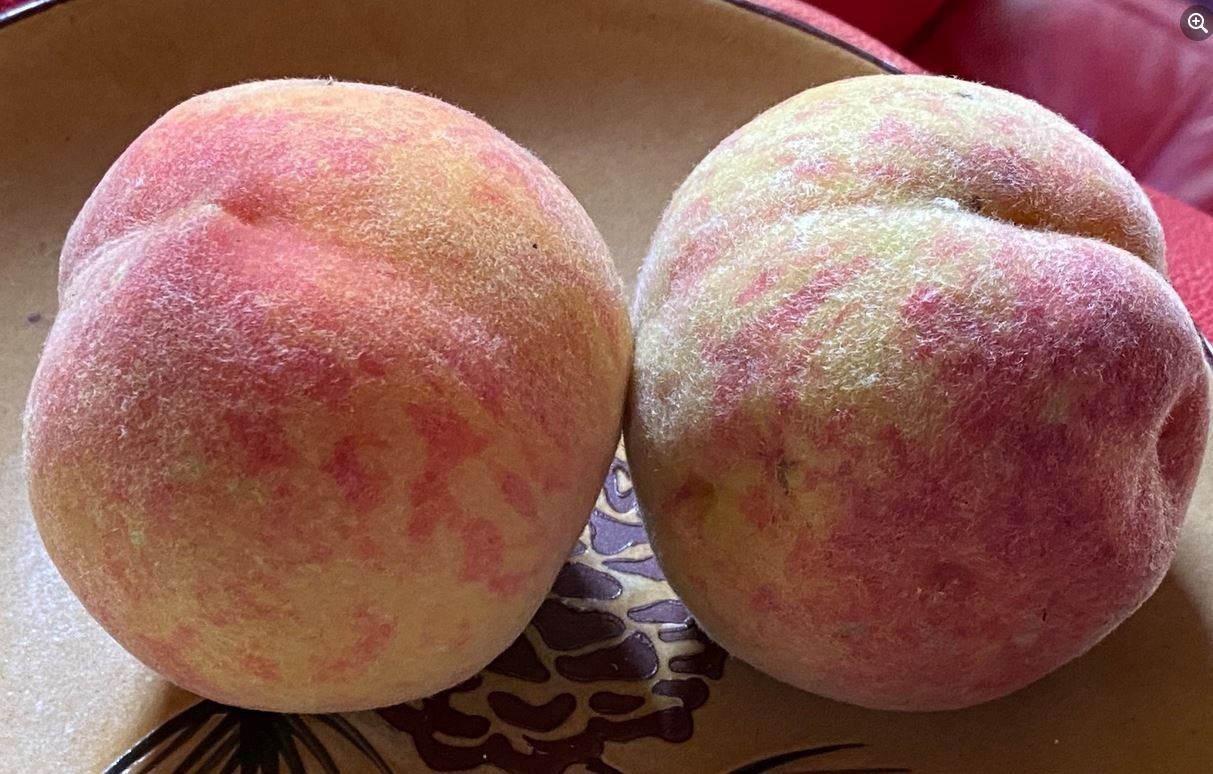Honey Royale
Apricot
Plums
Our prized, large nectarine tree grown under cover in a high tunnel greenhouse starts flowering the first week in March. It is always the first to bud out and our messenger that spring is on the way! Most of the tree produces “Honey Blaze” nectarines - a deliciously, sweet yellow-fleshed nectarine with deep red-orange skin. A number of years ago, I was lucky enough to have a connection with someone who gave me branches of what is considered in the fruit-growing world to be the “Holy Grail of Nectarines”: The Honey Royale. These trees are typically only sold to commercial growers who purchase 100s of them at a time. The grafted branches took and our Honey Blaze tree is now half Honey Royale as well. These fruits are typically ready for harvest by late June.
Honey Blaze
Among the most famous of all fruits, Shui Mi Tao has been grown for centuries just west of Shanghai. Considered the definitive peach, fruits are enormous, heart shaped wonders, with fuzzy skin, pinkish white flesh, and exceedingly sweet. The most prized fruit of markets both in Beijing and Shanghai where they are presented in a paper cup, a tradition we keep as well when we sell to market. This is the most delicate (and expensive) fruit we grow. When harvesting, we smell the tips of the peaches to test for readiness because even a gentle squeeze will leave bruises on the fruit. There is nothing else like this peach; the scent of ambrosia floats around the trees when the fruit begins to ripen. According to legend, this is the peach of longevity that accompanies Shou in all his representations, and the tree, or even a severed branch, is reputed capable of defense against any negative forces.
Like the nectarine, we have two Chinese Honey Peaches in a high tunnel greenhouse. We also have a young tree outdoors that had its first fruits this year! The harvest comes in three waves: large fruits in mid-late July, medium fruits late July-early August, and the final small peaches through mid-August. Then we are left waiting to see her blossom again in March.
From Blossom —> Fruitlet —> Harvestable Fruit
Shui Mi Tao
(Chinese Honey Peach)
Our 1 cherry of 2024
Cherries & Hybrids
Other Peaches
Saturn Peach - Saturn Peach - Also known as the “Donut Peach” - has a unique shape. It is more like a disc than the typical oval peach. The taste is quintessentially peachy, like you’d find in a yellow Southern peach. Delicious and entirely different from most other peaches we grow.
Blood Peach - Aptly named for its deep, red flesh and dark exterior skin, the blood peach has a tart, tannic taste that sets it apart from the yellow flesh peaches. For several centuries past, the practice of growing peach trees upon the verges of the familial vineyard has been a tradition in central Italy and the south of France.
These Peches de Vigna are all of a type not found in commercial orchards, red fleshed and purple skinned, always grown from seed and therefore somewhat variable in degree of pigmentation and productivity. The trees serve dual duty: both as bearer of August peaches and as arbors to support vines, typically of muscat or Trebbiano varieties.
Lars Anderson - This yellow-flesh peach is #2 in my book (behind the Chinese Honey Peach) in terms of taste profile. This yellow-flesh peach is #2 in my book (behind the Chinese Honey Peach) in terms of taste profile.
This is a large juicy sweet yellow-fleshed freestone fruit. Lars Anderson planted the tree on the Maine coast about 1965. He died in 1981 but the family continued to maintain the peach, even after a huge 1982 nor’easter blew the tree to the ground and split it in half.
Lars Anderson’s son-in-law Waite Maclin (aka Pastor Chuck) described the fruit as “tasting just like a peach should taste. When I give them away to friends and neighbors they think the peaches have been purchased in the South.” All around a great, sweet summery peach that will leave you reaching for another slice every time.
We have a handful of cherry trees on the farm, but only one produced fruit this year. We savored the singular cherry and maybe next year we’ll get a more substantial harvest. One of our beloved fruit varieties that we had the first harvest and taste of this year was the Shaa-Kar-Pareeh - An ancient, natural hybrid between a white-fleshed apricot and blonde cherry-plum (Prunus cerasifera), the resulting tree produces white-fleshed, white-skinned plumcots! The name in Farsi (shakar + pareh) translates to "sweetmeat" in English, of the sort usually provided guests at festive occasions. It has lightly fuzzy yellow and red-speckled skin with a white flesh, finely and characteristically aromatic like attar of rose, very juicy, clingstone. The taste is unlike anything else we are growing and is truly a mix of the parent fruits it hails from. The fruit has the texture of an apricot, but sweet taste of a cherry-plum with a tart note at the end.
First Shaa-Kar-Pareeh harvest
Another fruit we grow, but have not had fruit from yet, is Mesch Mesch Amrah, a hybrid cross between cherry-plum and apricot. Without question this has a cherry-plum parent, and is probably a spontaneous, chance garden hybrid from North Africa. Fruits are flattened, to 2 inches broad, violet near black, fuzzy skin. Flesh dense, yellow-orange, sweet, fairly juicy, not highly aromatic, resembling Nubiana plum.
Stone Fruit
As the name suggests, “stone fruits” encompass any fruits with a stone or pit inside. This includes nectarines peaches, plums, cherries, apricots, and more! 2024 is the first year we have really seen our stone fruit trees flourish on the property. We have been patiently waiting years for some of the trees to produce fruit; this season, we had our largest harvest yet!
Nectarines
Arctic Star
This nectarine is grown on either side of the Flower Shop. This year, a pesky squirrel stole the entire crop! So we’ll have to wait until next year to compare to the other nectarines.
Apricots are difficult to grow in Maine; they are an early spring bloomer which means they are subject to get hit with unexpected frosts. but this year we have had great success! Our best producer this year has been “Westcott” a prairie cultivar from Canada with golden, freestone fruit. We also had our first large harvest from an Afghanistan Apricot tree. My fruit mentor’s favorite to grow is “Robada”. Our tree only produced one fruit this year, but that means there is hope for a larger harvest next year!
We grow a number of plum varieties on the farm including dark-fleshed Jam Session and European plums. Light fleshed yellow plums called Green Gage and Mirabel de Nancy, a French brandy plum, the candy-sweet Toka (Bubblegum Plum), and the classic large pure purple plum, Black Ice. In the spring, the back orchard is filled with white flowering plum trees, resembling Sweet smelling popcorn balls.





















